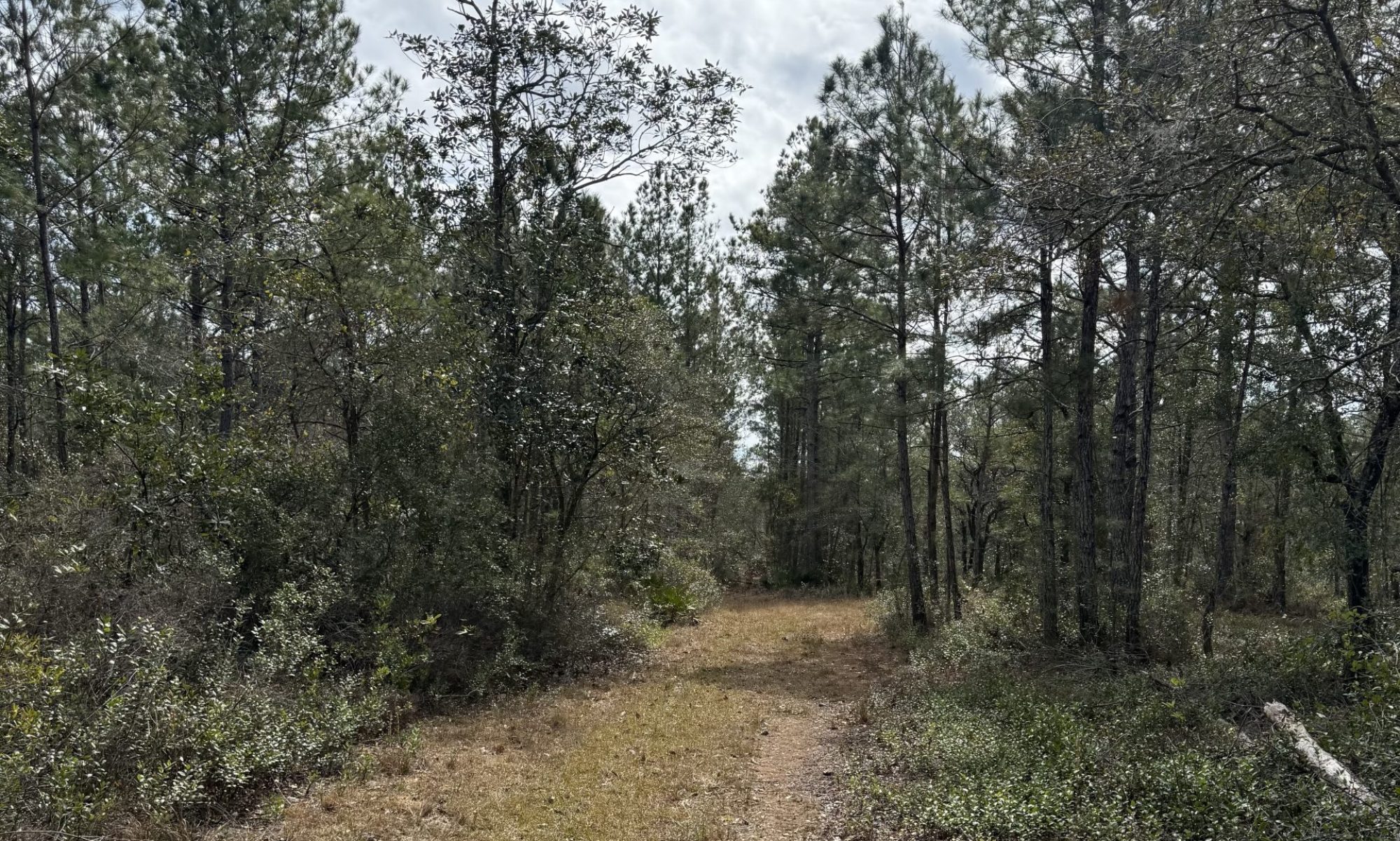Welcome to the heart of Anasa Farms – our vibrant and sustainably managed working forest nestled in the scenic Suwannee River Valley, near Live Oak, Florida. More than just a beautiful backdrop for your escape, our forest is a dynamic ecosystem where responsible timber cultivation coexists with the unique biodiversity of North Florida, offering you a chance to connect with nature in a truly special place. Explore the story of our woods and discover the principles that guide our stewardship in this remarkable region.
What is a Working Forest?
Many envision forests as untouched wilderness, and while we deeply value natural spaces, a working forest plays a vital role in our ecosystem and economy. Here, we actively manage the forest to:
Sustainably Produce Timber: We carefully cultivate and harvest trees, focusing on practices that ensure the long-term health and regeneration of the forest.
Enhance Wildlife Habitat: Our management plans prioritize creating and maintaining diverse habitats for the native flora and fauna of the Suwannee River Valley. This region is known for its rich biodiversity, and you might encounter white-tailed deer, wild turkey, gopher tortoises, and various songbirds.
Support Wetland Biodiversity: We recognize the vital role wetlands play in supporting a rich diversity of plant and animal life. Our management practices aim to maintain and enhance the habitat value of these areas for wetland-dependent species.
Sequester Carbon: Our growing forest helps combat climate change by absorbing carbon dioxide, contributing to a healthier environment.
Offer Recreational and Educational Opportunities: By welcoming you to experience our working forest through glamping and guided explorations, we aim to foster a deeper understanding and appreciation for the unique ecology of the Suwannee River Valley.
Our Working Forest Management Philosophy
At Anasa Farms, our approach to managing this working forest is guided by principles of sustainable forestry that balance ecological health, economic viability, and the unique characteristics of this North Florida landscape. We are committed to:
Sustainable Timber Harvesting: We implement carefully planned harvesting operations, utilizing methods appropriate for the specific timber types (whether pine, including potential longleaf, or hardwoods) and the overall health of the stand. Our goal is to ensure continuous forest cover and promote regeneration for future generations. Harvesting is conducted in a way that minimizes soil disturbance and protects water quality, especially near wetlands and waterways.
Pine Management and Restoration: Where pine is present or a goal for restoration, we employ specific silvicultural practices to encourage its growth and regeneration. This may include site preparation (such as prescribed burning or mechanical clearing), appropriate planting densities, and thinning regimes that favor the open, park-like structure characteristic of healthy ecosystems.
Upland Ecosystem Management: For the drier, well-drained upland areas of our forest (which may include pine flatwoods, sandhill, or hardwood hammocks), our management focuses on maintaining the natural diversity of plant and animal communities. This often involves mimicking natural disturbance regimes, such as the careful use of prescribed fire to reduce fuel loads, promote the regeneration of fire-adapted species (like longleaf pine and wiregrass), and control woody encroachment.
Hardwood Management: In hardwood areas, our management aims to promote healthy growth and species diversity. This may involve thinning to improve tree vigor and create favorable conditions for natural regeneration. We also focus on protecting sensitive hardwood stands, especially those adjacent to wetlands or waterways.
Wetland Protection and Management: We are committed to safeguarding the vital wetlands within our forest. Our management plans include establishing and maintaining buffer zones around these areas, minimizing any activities that could alter their hydrology, and avoiding the use of chemicals that could impact these sensitive ecosystems. We also focus on maintaining the native plant communities within the wetlands to support wetland-dependent wildlife.
Prescribed Burning: Fire is a natural and essential process in many Florida ecosystems, including pine flatwoods and sandhill. We utilize prescribed burning under carefully controlled conditions to reduce wildfire risk, manage competing vegetation, promote the regeneration of fire-adapted species, improve wildlife habitat, and maintain the overall health and biodiversity of these fire-dependent areas.
Invasive Species Control: We actively monitor for and manage invasive plant and animal species that can threaten the native biodiversity and ecological integrity of our forest. Our control methods may include mechanical removal, targeted herbicide application (used responsibly and away from sensitive areas), and working with relevant agencies on regional control efforts.
Wildlife Habitat Enhancement: Our forest management practices are designed to enhance habitat for a variety of native wildlife species found in the Suwannee River Valley. This includes maintaining diverse vegetation structure, providing food sources, and protecting important habitat features like wetlands and mature trees.
- We work closely with forestry experts and adhere to the best management practices recommended for this region to ensure the long-term health and productivity of our forest.
Experience Our Working Forest
Your stay at The Retreats at Anasa Farms offers unique opportunities to experience and learn about the natural wonders of our working forest in the Suwannee River Valley:
Immersive Glamping: Our tented glamping accommodations are designed to immerse you in the tranquility of this North Florida forest, with its unique blend of pine trees and the sounds of the local wildlife.
Self-Guided Nature Trails: Explore our marked trails and discover the natural history of the area. Signage will highlight the connections between the forest, the river, and the local ecosystems. *
Wildlife Observation: The Suwannee River Valley is home to a rich variety of wildlife.1 During your stay, you might have the opportunity to observe white-tailed deer, wild turkeys, numerous bird species, and perhaps gopher tortoises. We encourage responsible wildlife viewing practices.
